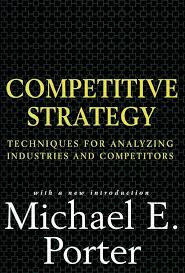Michael Porter's seminal works on competitive strategy and competition provide a framework for understanding and analyzing industry dynamics. This summary synthesizes key concepts from both books and explores the impact of digital transformation on competitive advantage.
A summary and expanded white paper based on Michael Porter's "Competitive Strategy: Techniques for Analyzing Industries and Competitors" and "On Competition," incorporating digital transformation.
Summary:
Michael Porter's seminal works on competitive strategy and competition provide a framework for understanding and analyzing industry dynamics. This summary synthesizes key concepts from both books and explores the impact of digital transformation on competitive advantage.
Key Concepts from Porter's Works:
- Five Forces Analysis: A framework for analyzing the competitive intensity of an industry based on the threat of new entrants, bargaining power of buyers and suppliers, rivalry among existing firms, and the threat of substitute products.
- Generic Competitive Strategies: Three generic strategies for achieving competitive advantage: cost leadership, differentiation, and focus.
- Value Chain Analysis: A tool for identifying the activities that create value for a firm and understanding the sources of competitive advantage.
Impact of Digital Transformation:
- New Business Models: Digital technologies have enabled the emergence of new business models that disrupt traditional industries.
- Increased Competition: The barriers to entry have decreased due to digital technologies, leading to increased competition.
- Rapid Pace of Change: The pace of technological change has accelerated, making it difficult for firms to keep up with the latest trends.
- Data-Driven Decision Making: Digital technologies have enabled firms to collect and analyze vast amounts of data, leading to more data-driven decision making.
Integrating Digital Transformation into Porter's Framework:
- Five Forces Analysis: Digital technologies can impact all five forces, such as increasing the bargaining power of buyers through online marketplaces or enabling new entrants to disrupt established industries.
- Generic Competitive Strategies: Digital technologies can be used to support any of the three generic strategies. For example, cost leadership can be achieved through automation and efficiency gains, while differentiation can be achieved through personalized products and services enabled by data analytics.
- Value Chain Analysis: Digital technologies can be used to transform the value chain, creating new activities or automating existing ones.
White Paper: Competitive Strategy in the Digital Age: A Framework for Analyzing Industries and Competitors
Introduction This white paper explores the intersection of Michael Porter's competitive strategy framework and digital transformation. We will delve into the key concepts from Porter's works, analyze the impact of digital technologies on competition, and provide a framework for understanding and responding to the challenges and opportunities presented by the digital age.
Porter's Framework for Competitive Strategy
- Five Forces Analysis
- Generic Competitive Strategies
- Value Chain Analysis
The Impact of Digital Transformation
- New Business Models
- Increased Competition
- Rapid Pace of Change
- Data-Driven Decision Making
Integrating Digital Transformation into Porter's Framework
- Five Forces Analysis in the Digital Age
- Generic Competitive Strategies in the Digital Age
- Value Chain Analysis in the Digital Age
Case Studies
- Real-world examples of firms that have successfully navigated the challenges and opportunities presented by digital transformation.
- Case studies illustrating the application of Porter's framework in the digital age.
Conclusion Michael Porter's framework for competitive strategy remains relevant in the digital age. By understanding the impact of digital transformation on industry dynamics and leveraging digital technologies to support their competitive strategies, firms can position themselves for long-term success.
Reference List:
- Competitive Strategy: Techniques for Analyzing Industries and Competitors by Michael E. Porter
- On Competition by Michael E. Porter
- The Innovator's Dilemma: [invalid URL removed]
- Rethinking Competition: The Strategy of the Value Disciplines by Michael E. Porter
- Competing on Capabilities: Seven Rules for Winning in a World of Mass Customization by David J. Collis and Michael E. Porter
- Digital Transformation: [invalid URL removed]
- The Future of Competition: Understanding the New Rules of the Game by Michael E. Porter and James E. Heppelmann
Note: This is a general outline for the white paper. You can expand on each section, provide more technical details, and include specific examples and code snippets to illustrate the concepts. Contactkeencomputer.com for details.
